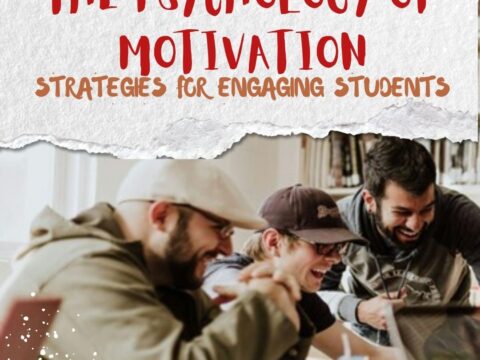In my high school teacher forums, as part of the discussion on preparing kids for college and career, we talk a lot about the huge shortfall in applicants for a growing list of tech jobs. Despite robust pay, excellent work conditions, and the value they place on creativity, jobs sit open. How do we get kids excited about careers that traditionally sound boring and math-oriented? Websites like Code.org have a great approach to making coding accessible to all kids but still, too few students think they are smart enough to do these jobs.
Time to reveal a secret I learned over the years. When I let students play Minecraft, Scratch, or a handful of other top-notch games, they eagerly — even happily — complete the programming and coding parts without ever considering it “math” or “smart”. I’ve seen them spend hours building a virtual world exactly the way they want it without getting bored or distracted.
By High School, the choice between college and career is foremost with life-changing consequences based on what the student decides. Often the choice depends upon the student’s goals. This topic could fill volumes but today, I want to focus on the job of building apps. App Developer is listed as number three on ThinkAdvisor’s list of the best jobs of the future, with a projected growth of 57% through 2020 (according to the BLS). You can also check Andromo which is an excellent platform to build a no code application. There aren’t a lot of jobs where people can make money doing what they love.
Aside from future jobs, there are great reasons why even kids who want to become doctors or lawyers (or farmers) would benefit from learning the lesson of app building:
- Apps teach real-world skills like design, marketing, video production, project management, presentation skills, and special media use.
- The app building process requires creativity, innovation, critical thinking, and problem-solving — all fundamental to success in lots of jobs.
- Good app developers are collaborators, willing to work with others to ensure the app is accomplished on time and according to specs.
- Good app developers are decision makers, not afraid to be risk-takers in building something no one has done before.
As I dug into the background of “app building” to prepare this article, I found that it doesn’t just refer to the little buttons you click to see about today’s weather or add numbers or find your friends (well, find their phones). App developers are the first ones who try out the latest trendy devices. Wouldn’t you love to experiment with 5G on your smartphone or play with Samsung’s foldable phone? Or how about wearable devices like the embedded chips intended to replace employee cards? An app developer used all of these before they ever went on sale. App developers can work for software companies, retailers, in healthcare, in the travel industry, for the entertainment industry, or in financial services. CNN Money has called “app developer” the best job in America.
Once you’ve explained to students what it really means to be on the cutting edge of the high-tech world, let them try one (or more) of these six great app creation tools:
- App Inventor (from MIT)
- Code HS (an app building curriculum)
- Glide (how to create apps from spreadsheets)
- MAD-learn (a beginning to end app development program for K-12)
- Thunkable (a curriculum)
- TinyTap (geared for teachers but fine for the right student group)
App Inventor
MS/HS; free
With the App Inventor program from MIT, students use block-based tools to build apps on a smartphone. By following the videos (available on YouTube or Vimeo), tutorials, and PDFs, students complete one (or more) of the beginning level apps. These include Hello Codi, TalkToMe I and II (Text-to-speech app), Ball Bounce Game, and Digital Doodle (a drawing app). Those ready for more can try Magic 8 Ball, Mini Golf Game, PaintPot, or about a dozen other options. When students finish, after some setup steps, the app is available on their phone or tablet immediately.
Teachers can access a curriculum and resources for teaching. Students do need to set up their mobile device to run the app. That’s free, and simple, but mandatory.
Here’s a quick video tutorial on the basic app, Talk To Me:
Code HS: Mobile Apps
High School; fee
Code HS: Mobile Apps is an online curriculum for teaching app building in High School. Students design and build applications to run on their own smartphones with the latest tools and technologies available for mobile app development. The curriculum is a series of learning modules that cover the fundamentals of building mobile applications. Each module is comprised of short video tutorials, quizzes, example programs, programming exercises, challenge problems, unit tests, and end-of-unit projects. The course is designed for a year long class that meets 5 days per week, though schools implement it in a variety of ways.
Glide
MS+; free/fee
Using the Glide website, students can create an app from a program they already know how to use — a spreadsheet. This can be completed as quickly as in five minutes, is powered by data (that’s where the spreadsheet comes in), can be customized, and is easy to share with a QR code or a link. It can even be run from the browser. While the program isn’t terribly powerful, it is an incomparable first-step to teaching app creation. If you run an entrepreneur class in your high school, the Glide app can even be published to app stores (after verifying all privacy considerations of your school). One more important point: No coding required for this!
Here’s a two-minute video of how Glide works:
MAD-Learn
K-12; fee
The MAD-Learn app allows students working individually or in teams to develop a useful app and understand the process of app creation. It uses the design thinking process (ideation, planning, design, creating, testing, and launch) to teach not just thinking but entrepreneurial skills that students will find useful when they graduate. It can be taught as a course anywhere from twelve to thirty-five hours so is well-suited to semesters. Once completed, students can use their app themselves and/or share it with others.
Thunkable
MS and HS; free (with restrictions); fee (for education accounts)
Thunkable (an MIT spin-off) is an easy-to-use app builder that uses drag-and-drop blocks to program content. Students can start from scratch or remix an existing sample app from the gallery of open source projects (similar to what is offered on Scratch). The resulting app works on Android and iOS and can be uploaded to Google Play or the App Store.
For education accounts, Thunkable can be curriculum-based and offers step-by-step tutorials and videos to assist learning.
Here’s a quick video tutorial in creating an app in Thunkable:
TinyTap App
K+ (as well as teachers); education subscription
TinyTap is a tool for creating interactive games, apps, and books as well as selecting class games from the TinyTap website library. As an app creation tool, teachers can build useful apps that use the data and resources from their own classroom, augment it with an extensive array of TinyTap gallery pieces, and then share these with students. No coding is required and the apps include no advertising
***
For many students, app creation brings programming alive in a way no other project can. The options discussed above vary from simple-and-fast to comprehensive-and-professional. Pick what works best for your student group.
–article sponsored by AppsGeyser
More coding
Websites and Apps to Support Hour of Code
10 Tools Students Can Use To Design Apps & Video Games
Jacqui Murray has been teaching K-18 technology for 30 years. She is the editor/author of over a hundred tech ed resources including a K-12 technology curriculum, K-8 keyboard curriculum, K-8 Digital Citizenship curriculum. She is an adjunct professor in tech ed, Master Teacher, webmaster for four blogs, an Amazon Vine Voice, CSTA presentation reviewer, freelance journalist on tech ed topics, contributor to NEA Today, and author of the tech thrillers, To Hunt a Sub and Twenty-four Days. You can find her resources at Structured Learning.





































